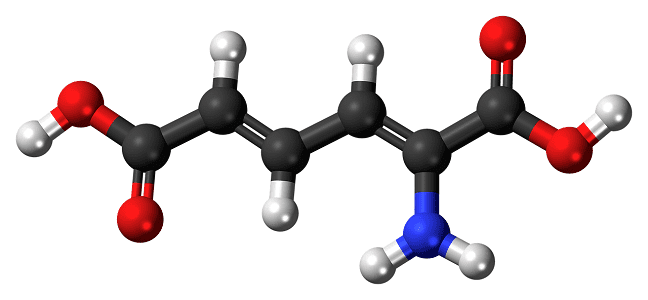
Psychedelic Drugs and Serotonin Receptors: Unlocking Therapeutic Benefits
- Health
-
Jul 08
- Share post

Researchers at the Icahn School of Medicine at Mount Sinai have made significant strides in understanding the complex mechanisms by which certain psychedelic drugs bind to and activate serotonin receptors, potentially offering therapeutic benefits for neuropsychiatric disorders like depression and anxiety. This study, published in Nature on May 8, focuses on how psychedelics interact with the 5-HT1A serotonin receptor, an often overlooked member of the serotonin receptor family in the brain, to produce these therapeutic effects.
The study’s first author, Audrey Warren, a PhD candidate at Icahn Mount Sinai, emphasizes the novelty of their findings. “Psychedelics like LSD and psilocybin have entered clinical trials with promising early results, though we still don’t understand how they engage different molecular targets in the brain to trigger their therapeutic effects,” Warren explains. “Our study highlights, for the first time, how serotonin receptors like 5-HT1A likely modulate the subjective effects of the psychedelic experience and also play a potentially pivotal role in their clinically observed therapeutic outcome.”
Historically, the hallucinogenic effects of LSD and 5-MeO-DMT, a psychedelic found in the secretions of the Colorado River Toad, were believed to be mediated primarily through the serotonin receptor 5-HT2A. However, these drugs also activate 5-HT1A, a validated target for treating depression and anxiety. Collaborating with Dr. Dalibor Sames, a Professor in the Department of Chemistry at Columbia University, the research team synthesized and tested derivatives of 5-MeO-DMT. Through cell signaling assays and cryo-electron microscopy, they aimed to identify chemical components that would preferentially activate 5-HT1A over 5-HT2A. This process led to the discovery of a compound named 4-F, 5-MeO-PyrT, which emerged as the most selective for 5-HT1A.
Lyonna Parise, PhD, an instructor in Dr. Scott Russo’s lab at Icahn Mount Sinai, tested this lead compound in a mouse model of depression. The results showed that 4-F, 5-MeO-PyrT had significant antidepressant-like effects, primarily mediated by 5-HT1A. “We were able to fine-tune the 5-MeO-DMT/serotonin scaffold to obtain maximum activity at the 5-HT1A interface and minimal activity at 5-HT2A,” explains Dr. Daniel Wacker, the study’s senior author and an Assistant Professor of Pharmacological Sciences and Neuroscience at Icahn Mount Sinai. “Our findings suggest that receptors other than 5-HT2A not only modulate behavioral effects stemming from psychedelics but may substantially contribute to their therapeutic potential.”
The research team’s discovery that their 5-HT1A-selective analog of 5-MeO-DMT showed antidepressant effects without the hallucinogenic properties associated with 5-HT2A is particularly promising. This breakthrough suggests the possibility of designing new psychedelic-derived medications that could provide the therapeutic benefits without the hallucinogenic side effects.
Moving forward, the team aims to investigate the impact of 5-MeO-DMT in preclinical models of depression. Given the research restrictions around psychedelic drugs, studies involving 5-MeO-DMT derivatives have been limited to animal models. “We’ve demonstrated that psychedelics have complex physiological effects that span many different receptor types,” Warren emphasizes. “We are now ready to build on that finding to develop improved therapeutics for a range of mental health disorders.”
The study’s implications extend beyond the immediate findings. The researchers believe that understanding the role of 5-HT1A in the therapeutic effects of psychedelics could revolutionize the treatment of mental health disorders. By targeting specific serotonin receptors, it may be possible to mitigate the side effects while enhancing the therapeutic outcomes. This approach aligns with the growing interest in personalized medicine, where treatments are tailored to the individual’s unique biological profile.
Moreover, the team’s interdisciplinary collaboration highlights the importance of combining expertise from various fields to tackle complex scientific questions. The integration of chemistry, pharmacology, and neuroscience was crucial in identifying and testing the new compounds. This collaborative model could serve as a blueprint for future research efforts aimed at understanding and treating mental health disorders.
The research also underscores the potential of psychedelics as a therapeutic tool. Despite their controversial history, psychedelics have shown promise in treating a range of conditions, including depression, anxiety, PTSD, and addiction. By elucidating the mechanisms underlying their effects, scientists can develop safer and more effective treatments. This study is a significant step in that direction, providing a deeper understanding of how psychedelics interact with the brain.
However, there is still much to learn about the long-term effects and safety of these compounds. Rigorous clinical trials and comprehensive studies are needed to evaluate their efficacy and potential risks. The researchers at Mount Sinai are committed to continuing their work, with the hope of translating their findings into clinical practice.
In conclusion, the study conducted by the Icahn School of Medicine at Mount Sinai represents a major advancement in our understanding of how psychedelics interact with serotonin receptors to produce therapeutic effects. By focusing on the 5-HT1A receptor, the researchers have opened up new possibilities for developing psychedelic-derived medications that are both effective and safe. Their work highlights the potential of psychedelics in treating mental health disorders and underscores the importance of interdisciplinary collaboration in scientific research. As they continue to explore the complex pharmacology of these compounds, there is hope that new, targeted treatments for neuropsychiatric disorders will emerge, offering relief to millions of people worldwide.
Source: Materials provided by The Mount Sinai Hospital / Mount Sinai School of Medicine. Content edited for style & length.



